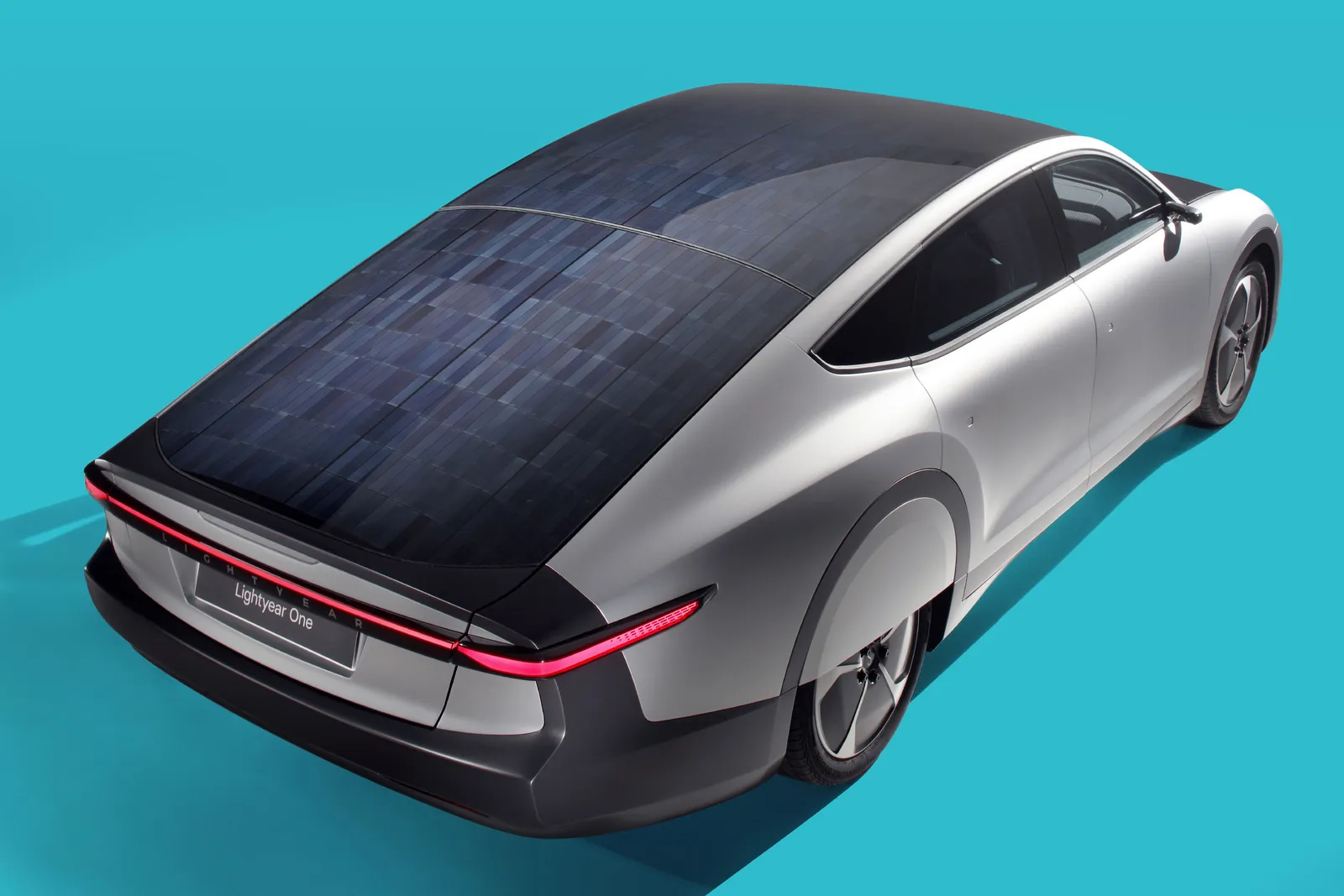
Solar cars are a fascinating fusion of cutting-edge technology and sustainable energy. These vehicles harness the power of the sun to propel themselves, offering a glimpse into the future of eco-friendly transportation. In this article, we will explore 20 intriguing facts about solar cars, delving into their history, technology, capabilities, and potential impact on the automotive industry. From record-setting solar car races to the innovative materials used in their construction, there is much to uncover about these marvels of engineering. Join us on a journey through the world of solar cars as we shine a light on their remarkable feats and the promise they hold for a greener, more sustainable future.
Key Takeaways:
- Solar cars harness sunlight to power electric motors, promoting eco-friendly transportation and inspiring future innovation in renewable energy technology.
- The development of solar cars symbolizes a greener, more sustainable future for transportation, showcasing the potential of clean, renewable energy sources in revolutionizing the automotive industry.
Solar cars are powered by sunlight.
Solar cars utilize photovoltaic cells to convert sunlight into electricity, which is then used to power the vehicle's electric motor. These cells are typically made from silicon, a semiconductor material that enables the efficient conversion of solar energy into electrical power.
The first solar car was created in 1955.
In 1955, William G. Cobb of General Motors unveiled the first solar-powered car, the "Sunmobile." This vehicle was equipped with a small array of solar cells and was capable of harnessing solar energy to supplement its power source.
Solar cars are designed for efficiency.
The design of solar cars prioritizes aerodynamics and lightweight construction to maximize energy efficiency. This includes streamlined shapes, low-drag tires, and lightweight materials such as carbon fiber to minimize energy consumption.
Solar car races are held worldwide.
Various competitions, such as the World Solar Challenge and the American Solar Challenge, provide platforms for teams to showcase their solar car designs and innovations. These races cover long distances and test the endurance and efficiency of the vehicles.
Solar cars have set impressive speed records.
Solar cars have achieved remarkable speeds, with some models reaching over 60 miles per hour (97 kilometers per hour) using only solar power. These speed records demonstrate the potential of solar energy as a viable means of propulsion.
The efficiency of solar cars continues to improve.
Advancements in solar cell technology and vehicle design have led to significant improvements in the efficiency of solar cars. These developments aim to enhance the practicality and performance of solar-powered vehicles.
Solar cars promote sustainable transportation.
By harnessing renewable energy from the sun, solar cars contribute to reducing reliance on fossil fuels and minimizing carbon emissions. This aligns with efforts to promote sustainable and eco-friendly transportation solutions.
Solar cars have practical applications beyond racing.
While solar car races showcase the capabilities of solar-powered vehicles, the technology also has potential applications in everyday transportation, offering a clean and renewable energy alternative for commuters.
The development of solar cars requires interdisciplinary expertise.
Creating solar cars involves expertise in various fields, including electrical engineering, materials science, aerodynamics, and solar energy technology. This interdisciplinary approach is essential for optimizing the design and performance of solar cars.
Solar cars face challenges in energy storage.
One of the key challenges for solar cars is effectively storing the energy captured from sunlight. Innovations in battery technology are crucial for enhancing the storage capacity and efficiency of solar-powered vehicles.
Solar cars exemplify innovation in sustainable mobility.
The evolution of solar cars represents a pioneering effort in advancing sustainable mobility solutions, inspiring further innovation in renewable energy integration within the automotive industry.
Solar cars contribute to environmental conservation.
By operating on clean energy derived from solar power, solar cars play a role in reducing air pollution and environmental impact, contributing to the preservation of natural ecosystems.
Solar cars showcase the potential of clean energy technologies.
The development and success of solar cars serve as a testament to the potential of clean energy technologies in revolutionizing transportation and addressing environmental challenges.
Solar cars embody the fusion of technology and sustainability.
The integration of solar technology into the automotive sector exemplifies the synergy between technological innovation and environmental sustainability, paving the way for greener transportation solutions.
Solar cars inspire future generations of innovators.
The ingenuity and progress in solar car development inspire young minds to pursue careers in science, engineering, and renewable energy, fostering a new wave of innovation and sustainability.
Solar cars represent a glimpse into the future of transportation.
As advancements in solar technology and electric vehicles continue, solar cars offer a glimpse into a future where sustainable, solar-powered transportation could become more prevalent.
Solar cars stimulate research in solar energy applications.
The pursuit of efficient solar car designs drives research and development in solar energy applications, leading to broader advancements in harnessing solar power for various purposes.
Solar cars encourage collaboration for sustainable solutions.
The development and promotion of solar cars foster collaboration among researchers, engineers, and environmental advocates to drive sustainable solutions for transportation and energy.
Solar cars symbolize the potential for a cleaner, greener future.
The progress and innovation in solar car technology symbolize the potential for a future where transportation is powered by clean, renewable energy sources, contributing to a healthier planet.
Solar cars epitomize the marriage of innovation and environmental stewardship.
The fusion of technological innovation and environmental stewardship embodied by solar cars exemplifies a harmonious approach to addressing transportation needs while prioritizing the preservation of the planet.
Solar cars represent a remarkable intersection of technology and sustainability, showcasing the potential for clean, renewable energy to revolutionize transportation. With ongoing advancements and a growing emphasis on environmental consciousness, the future of solar cars holds promise for a greener, more sustainable mode of transportation that harnesses the power of the sun. As solar car technology continues to evolve, it serves as a beacon of innovation, inspiring collaborative efforts and driving progress toward a cleaner, more environmentally conscious future.
By harnessing the boundless energy of the sun, solar cars exemplify the ingenuity and creativity of human endeavors, offering a glimpse into a world where transportation is powered by clean, renewable energy sources. As the journey toward sustainable mobility unfolds, the development and proliferation of solar cars stand as a testament to the potential of solar energy in reshaping the automotive landscape and fostering a more environmentally responsible approach to transportation.
Conclusion
In conclusion, solar cars represent an innovative and sustainable mode of transportation that harnesses the power of the sun to propel vehicles. With ongoing advancements in solar technology and engineering, these vehicles are becoming more efficient and practical for everyday use. The development of solar cars not only reduces our reliance on fossil fuels but also paves the way for a cleaner and greener future. As awareness of environmental issues continues to grow, the potential for solar cars to revolutionize the automotive industry is immense. Embracing solar-powered vehicles can significantly contribute to mitigating climate change and creating a more sustainable world for generations to come.
FAQs
Are solar cars practical for everyday use?
Solar cars are still in the developmental stage and may not be as practical as traditional vehicles for everyday use due to limitations such as charging time and energy storage. However, advancements in technology are making them more efficient and viable for certain applications.
How do solar cars perform in cloudy or rainy weather?
Solar cars are designed to capture and store solar energy, so they can still operate in cloudy or rainy conditions, albeit with reduced efficiency. The energy stored in the vehicle's batteries can be used when sunlight is not readily available, ensuring continuous operation.
What are the main challenges in the widespread adoption of solar cars?
The main challenges include the high cost of production, limited driving range, and the need for infrastructure to support solar charging stations. As technology continues to advance, these challenges are being addressed to make solar cars more accessible and practical for the general public.
Was this page helpful?
Our commitment to delivering trustworthy and engaging content is at the heart of what we do. Each fact on our site is contributed by real users like you, bringing a wealth of diverse insights and information. To ensure the highest standards of accuracy and reliability, our dedicated editors meticulously review each submission. This process guarantees that the facts we share are not only fascinating but also credible. Trust in our commitment to quality and authenticity as you explore and learn with us.


